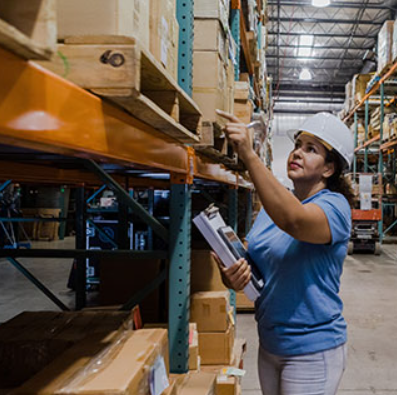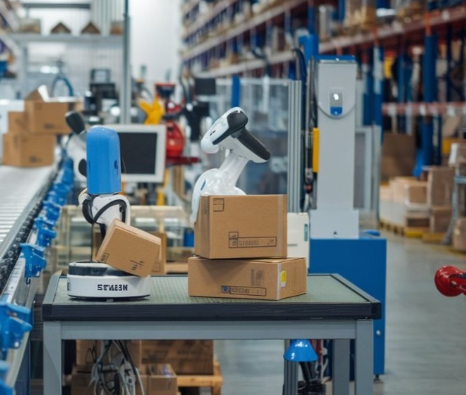
Supply chain automation has become an essential aspect of modern logistics, helping businesses streamline operations and reduce manual tasks. Though often associated with robots in warehouses, automation encompasses a wide range of technologies designed to enhance the movement of products, reduce human error, and improve overall supply chain performance. Let’s explore what supply chain automation entails and whether Australia is ready for its widespread adoption.
What is Supply Chain Automation?
Supply chain automation refers to the use of technology to perform tasks that were once done manually. It’s not just about robots in warehouses; automation transforms how goods move from one point to another. Picture inventory systems that automatically reorder products when stock is low, robots picking and packing orders round the clock, and delivery routes that adjust in real-time based on traffic patterns. What was once time-consuming manual labor is now handled efficiently by smart systems. The goal is not to replace workers but to enhance their roles by handling routine tasks and allowing them to focus on more strategic activities like relationship-building and problem-solving.
Examples of Supply Chain Automation
- Warehouse Management Systems (WMS): Leading retailers, such as Amazon, use Automated Guided Vehicles (AGVs) in warehouses to pick products with high accuracy. These systems interact with the WMS to optimize picking routes, reducing fulfillment times.
- Smart Inventory Management: IoT sensors and RFID tags monitor inventory levels in real-time. When stock runs low, the system automatically places orders with suppliers, ensuring consistent product availability without manual intervention.
- Automated Order Processing: Today’s systems can automatically process orders from various channels, validate them, check inventory, and generate picking lists without human involvement, accelerating order fulfillment.
- Predictive Analytics: By analyzing historical data, market trends, and even weather patterns, modern systems forecast future demand, helping retailers avoid overstocking and stockouts.
- Transportation Management Systems (TMS): These systems optimize delivery routes based on real-time traffic and weather conditions, improving delivery speed and reducing transportation costs.
- Robotic Process Automation (RPA): Routine tasks like data entry, generating reports, and sending notifications can now be handled by bots, freeing up time for employees to focus on strategic decision-making.
- Blockchain: This technology ensures supply chain transparency by providing an immutable record of product movements, enhancing trust among all parties in the supply chain.
Benefits of Supply Chain Automation
Enhanced Operational Efficiency
The primary benefit of automation is the improvement of both time and cost efficiency. By shifting repetitive tasks to automated systems, employees can focus on high-value tasks, leading to more strategic decision-making. Inventory costs are minimized as automation ensures optimal stock levels, and transportation expenses are reduced through intelligent route planning. Furthermore, automation prevents errors before they occur, cutting down on costly mistakes and delays.
Accuracy and Quality Control
Automation improves the accuracy of operations, especially in inventory tracking. Real-time data ensures that businesses always know exactly what they have in stock and where it is located. Automated quality control systems, such as AI-powered inspection tools, catch defects that human workers may miss, ensuring only high-quality products reach customers.
Data Analytics and Predictive Insights
Automation doesn’t just make processes faster; it also enhances decision-making. By using data analytics, supply chain managers can gain a comprehensive view of operations, from warehouse activities to delivery performance. Predictive capabilities allow businesses to anticipate disruptions and adjust their strategies accordingly, reducing the risk of stockouts and delays.
Improved Customer Satisfaction
Customers expect fast, reliable service, and automation helps meet those expectations. Automated systems process orders more quickly and accurately, ensuring on-time delivery. Additionally, real-time order tracking gives customers the visibility they crave, improving their overall experience. With consistent service levels, even during peak times, businesses can build customer loyalty and maintain a competitive edge.
Sustainability and Competitive Advantage
Supply chain automation also plays a key role in sustainability efforts. Automated systems help reduce waste by optimizing processes and minimizing errors. Additionally, by finding the most efficient routes and methods for delivery, companies can lower their carbon footprint. The speed and efficiency enabled by automation also allow companies to respond more swiftly to changes in market demand, giving them a competitive edge.
Is Australia Ready for Supply Chain Automation?
Australia’s supply chain industry is gradually adopting automation technologies, but the pace of implementation varies. While large retailers and companies with global supply chains are making significant strides, smaller businesses may face challenges in terms of investment and expertise. However, as automation becomes more affordable and accessible, even smaller players will begin to leverage these technologies to stay competitive.
Conclusion
Supply chain automation has already transformed industries across the globe, and it’s only a matter of time before it becomes the standard in Australia. From warehouse robots and automated order processing to advanced analytics and predictive forecasting, automation has the potential to improve every aspect of supply chain management. As businesses embrace these technologies, they can expect increased efficiency, lower costs, improved customer satisfaction, and a stronger competitive position in the market.












